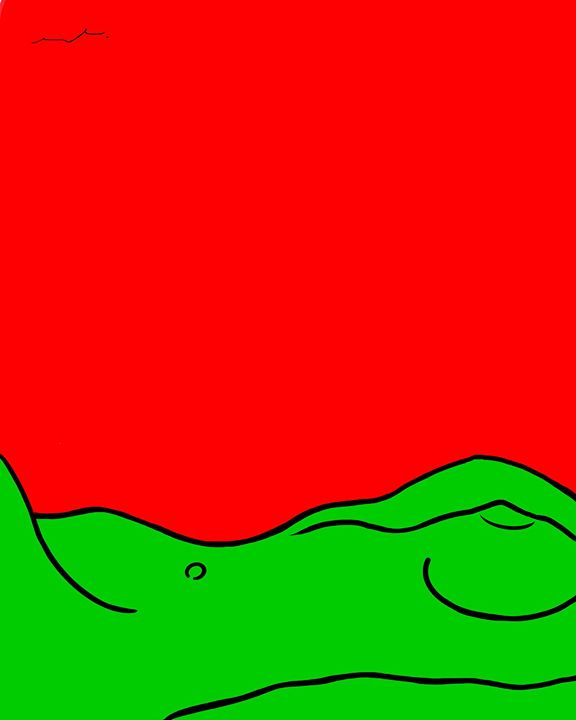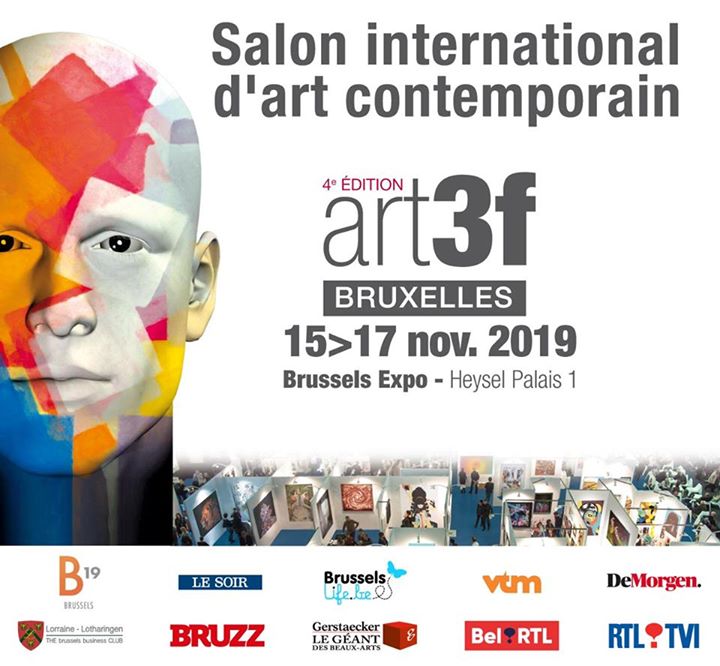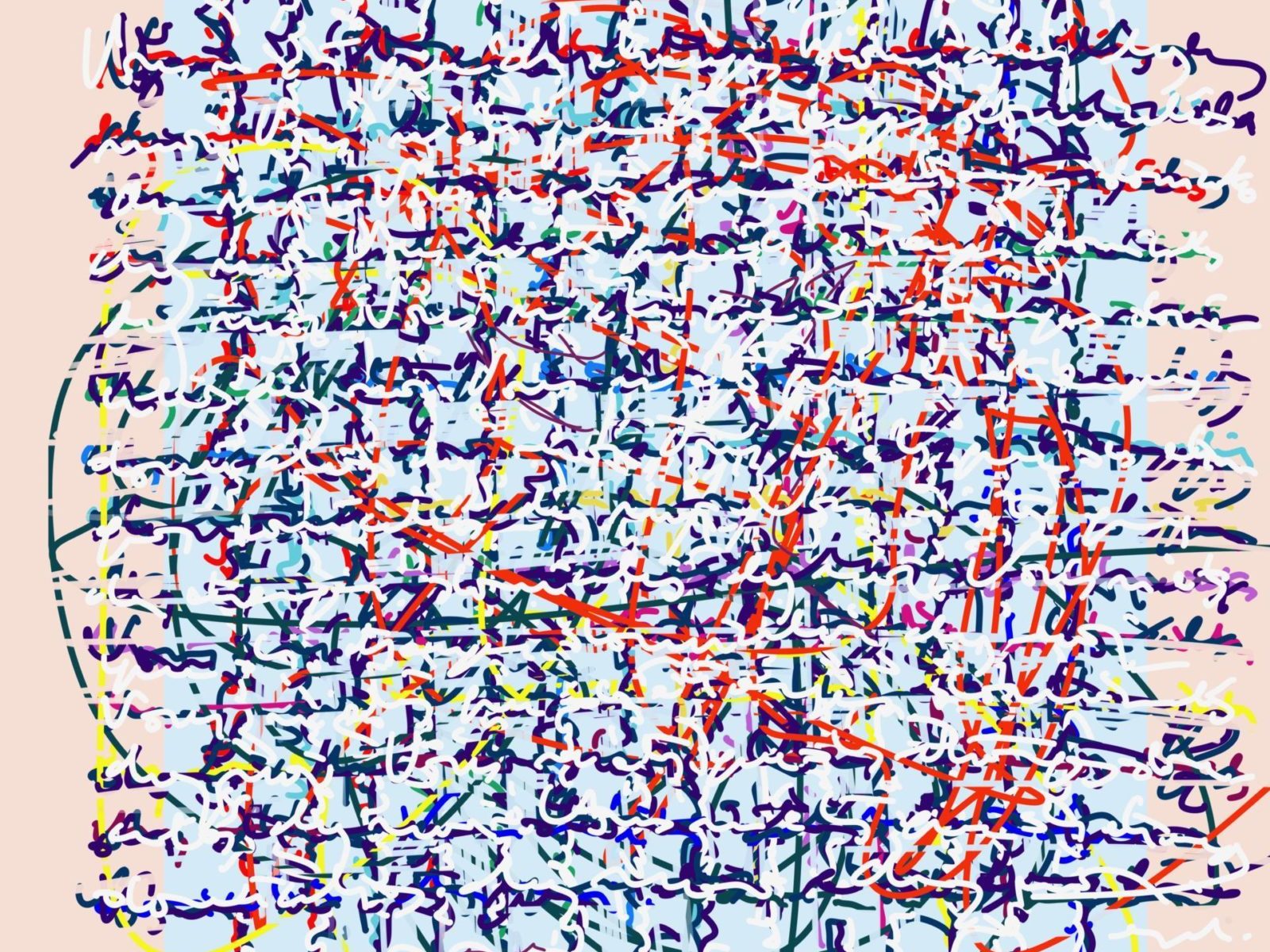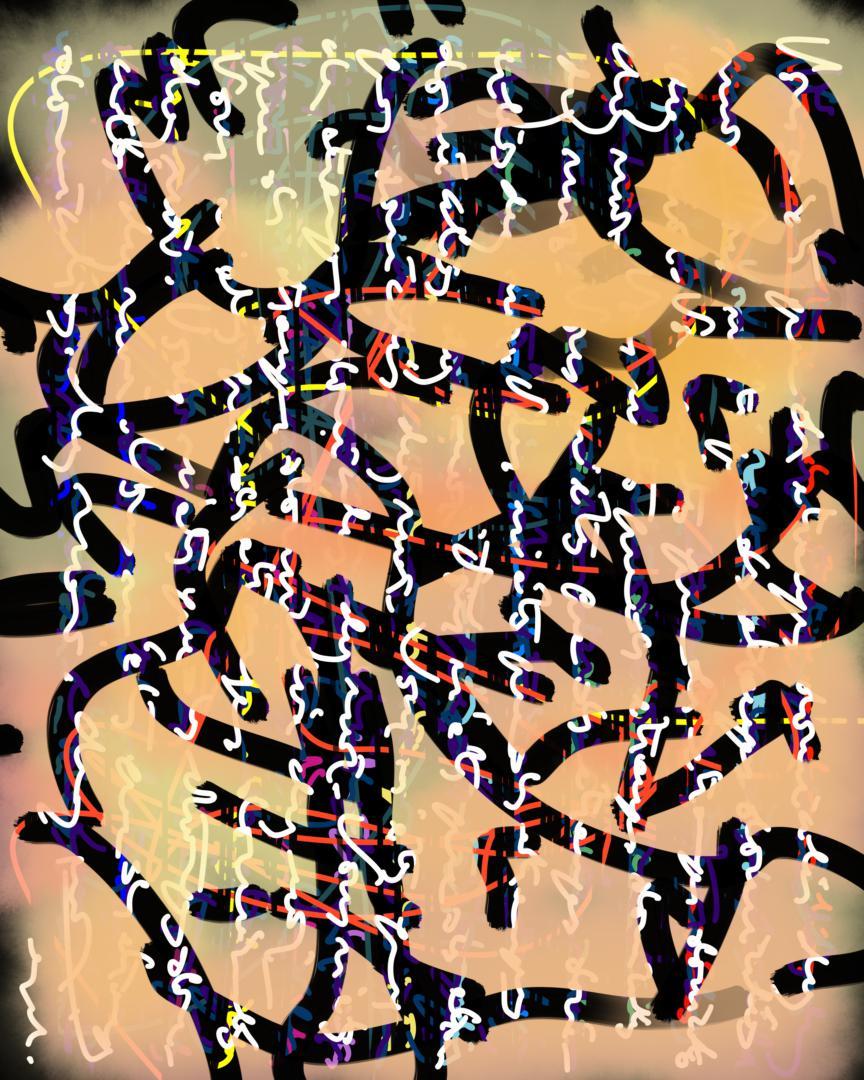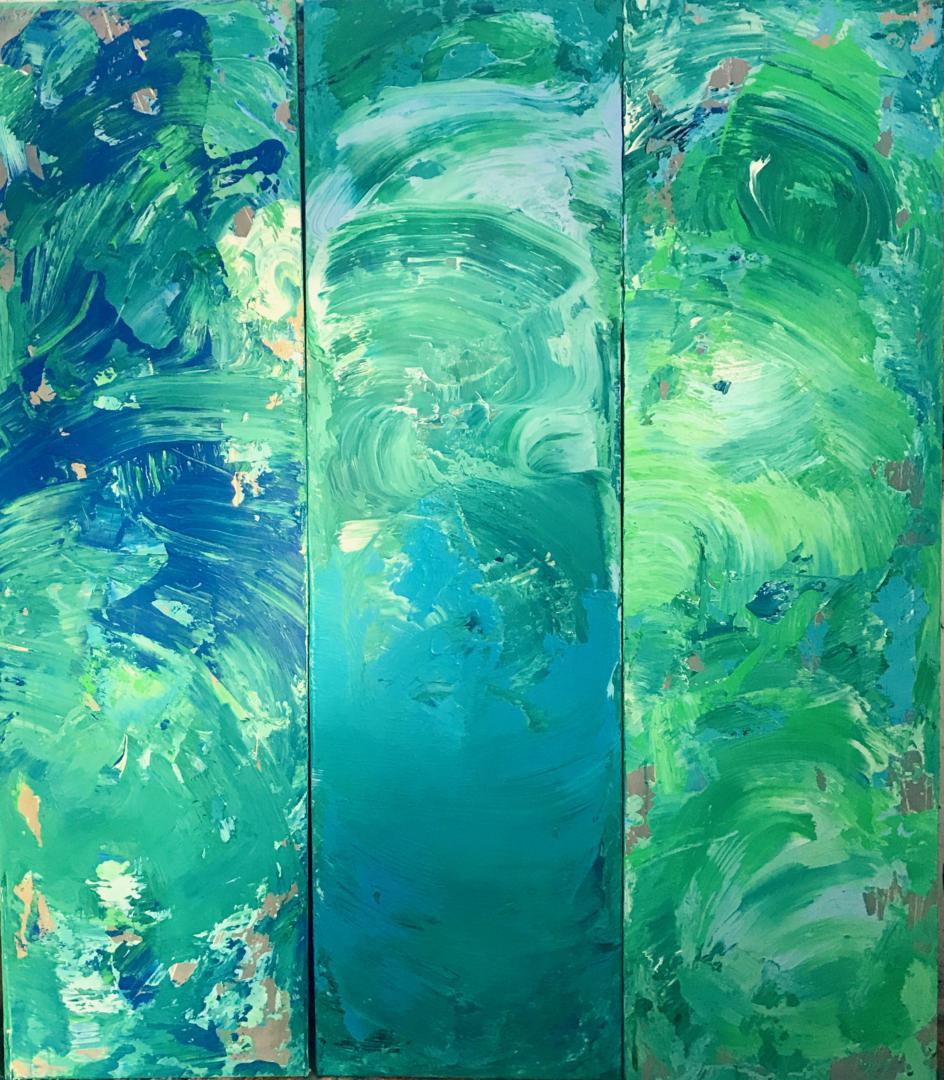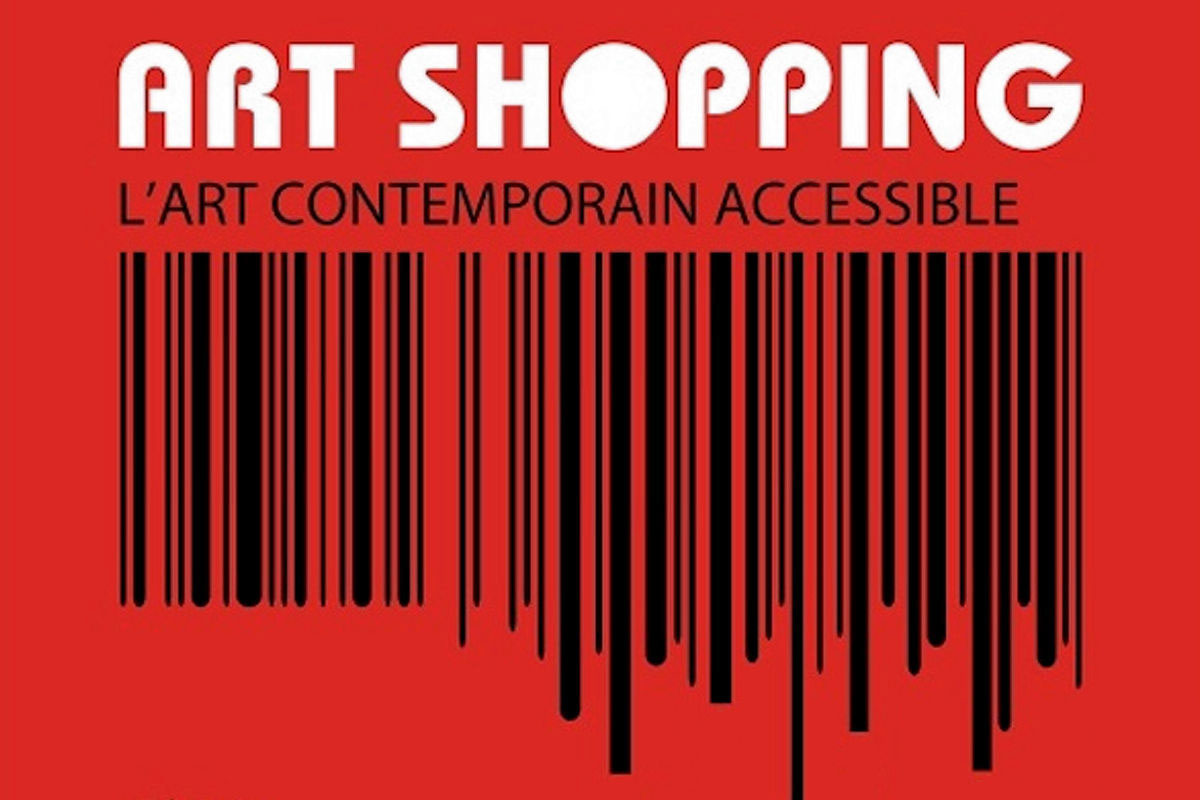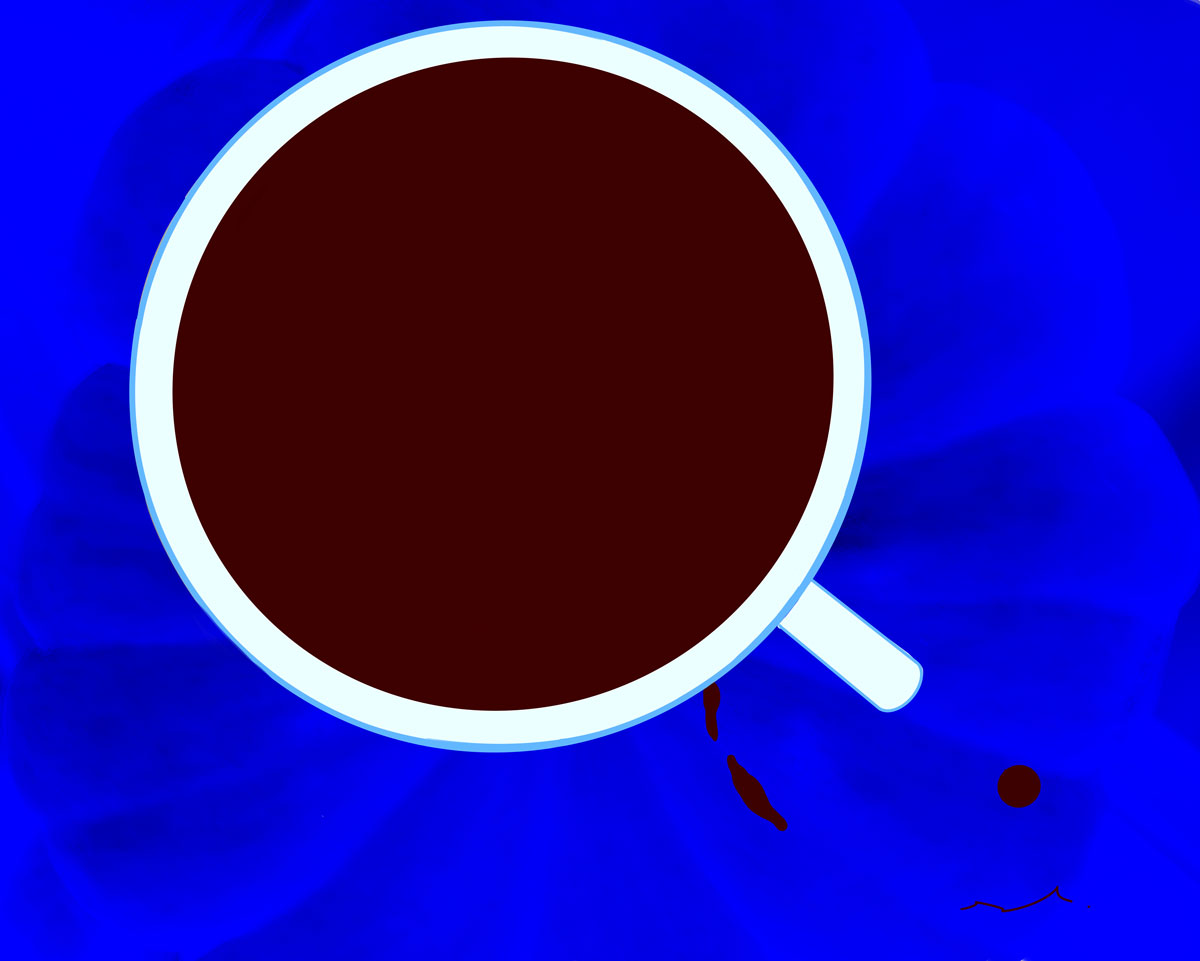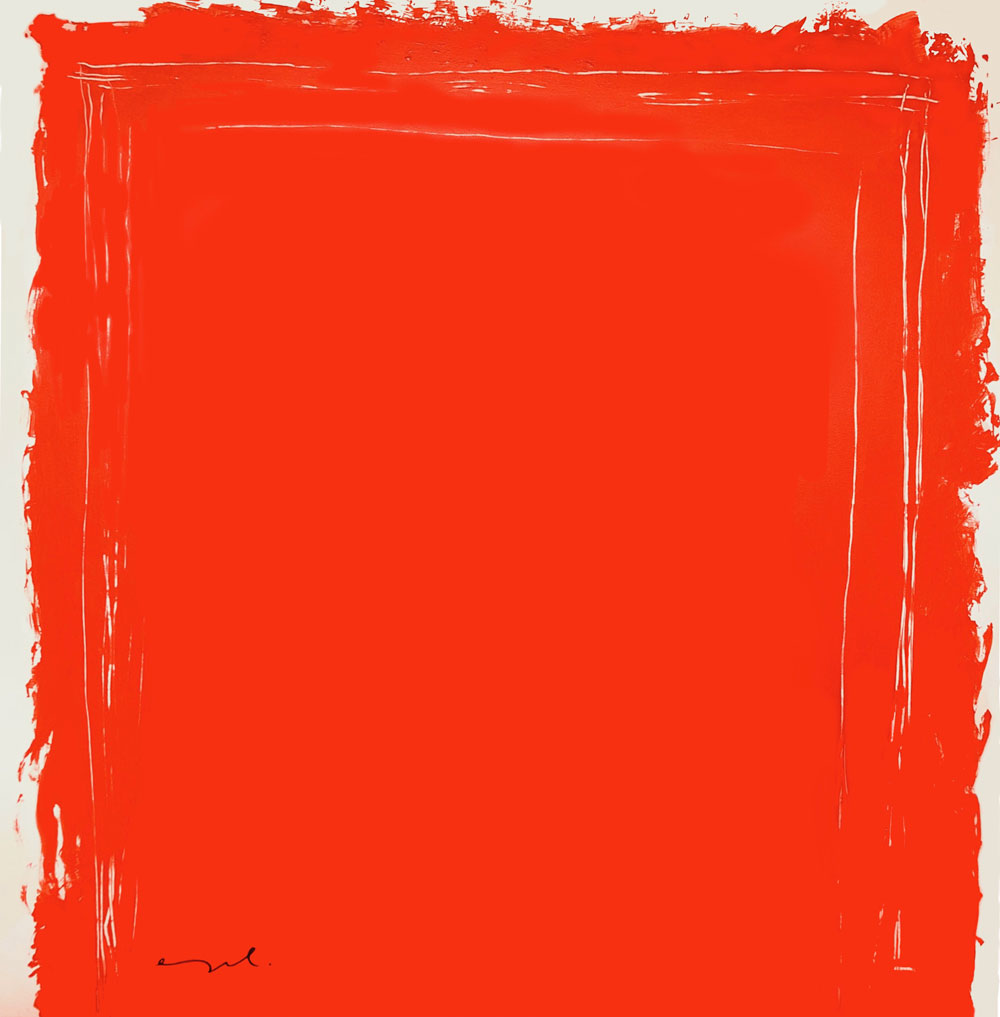I am very pleased to announce that the “Nu-paysage” shown below was spotted by an art curator during the Art Shopping exhibition at the Carrousel du Louvre and will be exhibited at the Spectrum in Miami, a major exhibition of contemporary art to be held from December 4th to 8th. At the moment when I speak to you, the work is already on the boat towards the USA 🙂
I will be at Art3F Brussels
I am pleased to announce that I will be present at the International Exhibition of Contemporary Art which will take place in Brussels from November 15th to 17th at Heysel Palais 1. I will exhibit it through the Madrilenian gallery VAN GOGH Art Gallery who selected 3 of my acrylic paintings:
– The magpie on the willow
– Red and White Square
– window on heart
Interview with Norbert Engel (part 4)
Parallel to your works according to a usual process (paintings on canvas) you started in painting by a computer In painting does the evolution of the painter correspond to the evolution of the expectations of the public? Why this new direction? Is the sensuality of the painting brush spread out, do not you miss in this way of working the color?
These last two questions give me the opportunity to answer the question “how to paint? ” acrylic or digital? During my visit to the exhibition in Beaubourg of the painter David Hockney in 2017 I discovered the painting on IPad and I wanted to test its potentialities. It takes a period of adaptation to the tool, especially to mourn the classic feelings of painting on the web that no longer exist. There are also the famous spots that no longer fall from the sky. We no longer have that sense of space to conquer and appeal to a blank canvas. On the other hand, the digital technique first brings the possibility of having an absolutely unlimited color palette with very bright colors. Moreover, the possibility of directly transposing all existing natural colors is an extraordinary advantage, because the classical painter or simply pure colors and in this case has a necessarily limited range or is forced to make mixtures of colors according to rules accurate. With digital we can explore images that exist through digital files.
We can do photomontages. For example I’m going to do a digital work whose title will be “the ghost of the artist”. I will symbolically represent the artist who totally invests his work. To do this, I photograph the floor carpet on which a number of canvases have been painted. On this carpet strewn with stains of paintings, vestiges of numerous works of painting, is posed a pair of shoe of the painter. This enlarged photo in large format 130 * 162 is glued on a hard and rigid material such as aluminum or on a canvas mounted on chassis and the latter, when done well, can deceive the enemy as they say 🙂 These are among other things the kind of fun and creative fantasies that digital technology allows. Another advantage for the amateur is the ability to acquire the work in the format he wants: S, M, L or XL. We can work in limited edition to 8 copies, which lowers the purchase price. If I am outside the workshop for example, or traveling for example IPad is perfect, because it allows to take with you all the colors of the world, much more than in the richest palette of classic painter . The hands are always clean, it’s a significant advantage 🙂 At the level of “Faktura” as said the ancients, some might regret the absence of texture representation. In fact I will test during my next exhibition Art Shopping at the Carrousel du Louvre next month the reactions of the public. It will be a first! But in any case I would abandon the canvas for IPad and vice versa. From now on, from canvas to IPad and from ipad to canvas, I am, I paint.
Interview with Norbert Engel (part 3)
And here in color, you move to the monochrome … Is this a new step?
Ah, the monochrome? A step? I would not say that like that. I would say a temptation? deadlock? a challenge? a dream? an immense desire? This gives me the opportunity to answer “for whom to paint? ” If I were alone in the world, I mean without “other”, I would paint only monochromes. The monochrome is this ocean of blue, or turquoise or red or white regardless of the color because I love them all. monochrome is the infinite within the reach of the human. it’s unity it’s a perfection. the temptation to paint only monochromes is strong, but I’m afraid of the look of the other who thinks it’s “foutage mouth” But who do I paint for?
– for me, to experience a rheological and visual enjoyment to spread a color evenly over an enormous white canvas?
– for the other who judges me and who goes or not, buy the work and thus, give me the gratification that I wait?
– for both my general? a dead end because actually, what to paint after the monochrome?
I have experienced it: after painting my last monochrome of 1.80 by 1.80 which was not really a true monochrome, rather a shades of beige, this was what I call “an interruption momentary of the program. “Bridled that I was not personal beliefs. resumption of work in 2015: crossing the monochrome. I covered this same golden yellow canvas and painted on it the biblical theme of the Ark of the Covenant. followed by a series of monochrome canvases on which a personal writing sought form. “A diffused light demands its form to nothingness” Taoist philosophy “Men seek light in a fragile garden where colors abound” Jean Tardieu
a challenge. Considering monochrome as the most radical elimination of the subject, I like this reflection of Motherwell: “there is in every work a double aspect: a formal or structural side and a literary side or related to the subject. It is by suppressing the second that we are most likely to see the first, by bringing to light an abstract, universal language. ” an immense desire. Mid 2019 I buy 7 large canvas frames of the most beautiful linen. I paint them each in the 7 colors of the rainbow. I spend several weeks to let myself bathe by their respective light. The temptation is strong again to expose them as they are. the same question comes back “Why paint? But this time not “why paint rather than not paint”, no, I have already answered this question to know “because I am a painter and that art is a process that has existed since the dawn of time and so I participate in this process and this process because I am a painter ” but “why paint monochromes” and the answer is: “I do not know” “I am, I paint and basta! ” As a result of the races, I covered 6 of these magnificent monochromes with spots that had fallen from the sky, and that makes beautiful paintings. I’m going to see what I’ll do in the seventh, and I think maybe one day when I’ve been anointed by the public, I’ll only paint monochrome. 🙂
Interview with Norbert Engel (part 2)
You did not stop at this first stage because of what it is agreed to call the figurative you are spent in the abstract, in paintings whose particularity is always the great presence of the colors that catch the flight. spectator. Why this cape in your painting?
Ah, you also talk about cape! And luckily you do not talk about a change of course 🙂 because for me there is no figurative or abstract dilemma. what I’m trying to represent what I think is essential in what I see or feel it is the “for what” in other words. I paint in a way that I hope will have an impact on the viewer. Sometimes I want to do figurative sometimes abstracting to the maximum. the abstracting can sometimes be a simplification of the forms, a deletion of a maximum of details which does not seem essential to me, or sometimes completely removing the forms by using only the color. the abstract at home is almost always part of nature (what I see, what I feel, what I am) unlike constructivists or Mondrian for example, who create a reality according to precisely defined relationships by the artist and who have no external object. “Why I paint” could perhaps be defined by an inner necessity coupled with an external necessity. the inner necessity is a hidden energy that reveals itself in a random way and that is expressed by spots. Or the spots are shapes that fall from the sky and I just need to color them rather than inventing them. When I do abstract the random is important with respect to the lines. It’s especially for colors that my choices are important. One could say that the lines or shapes fall from the sky or my unconscious and the colors rise from the sea or the earth, so more of my will and this union is born a creation.
So the abstract or figurative question is a false problem. The real challenge is to succeed in doing a work as Bazaine said “who is incarnate”: “That the sensation is embodied in an immediately recognizable reality or that it is embodied in an equivalent reality, there is no between these two processes of creation, of difference of nature, or even of degree. The destiny of the world is not played between the figurative or the abstract, but between the incarnate and the non-incarnate, which is very different. “The incarnate is that relationship of contact between the outer and inner world, while disembodied art qualifies the art that has lost all contact. “In this posture of incarnation vis-à-vis the world and permeability, the forms that we recognize, and are therefore in us. It is not nature that we recognize, but a sensation, but ourselves. ” I totally adhere to this idea, joining in this way all the painters with whom I feel in touch: Matisse, de Staël, Bazaine, and all the American abstract expressionists up to the painters of Pop Art. In fact, all art is abstract to the extent that it is not nature, but a contraction of nature. Every artistic creation is a creation by an inner world that encompasses the outside world. Creation or abstraction is a kind of empathy, an immersion in the world to retain only recognizable forms.
Interview with Norbert Engel (part 1)
Norbert, you began by painting nudes, mostly women’s nudes, with brushstrokes of bright colors. Then you are particularly attached to landscapes, which you have captured a moment of light or the opposite of shadows, everyday objects, louvers, doors or singular objects, on the contrary as cases of deportees exhibited at the Budapest Museum, even angels … What do you attribute this evolution to?
The fact of having painted the body of women during the 3 years of my training at Arts Déco Strasbourg, made me feel that I was deep inside myself, painter. My master Franck Helmlinger strongly encouraged me to continue and to stand on my own. Shortly after, I had the chance to meet the painter Roger Dale with whom I worked for a while on the outdoor landscape motif. With Roger and other painters we reflected hours and hours on the following questions: “why paint? What to paint? “For whom to paint? »,« How to paint »,« what is style? ”
There, you ask me the question of the successive “what to paint? “.
The first theme I chose was the horizon. This theme deeply affects me irrationally. I try to understand.
– the meeting of heaven and earth: yes it is very strong this notion of meeting. this notion of “the entre”.
– the sky: yes very strong. I think of Baudelaire’s poem: “who do you like enigmatic man? … I like the clouds … that pass … over there … the marvelous clouds” I spent all my adolescence observing the metamorphoses of the clouds and I the impression of having stored in my memory all the processes of metamorphoses that I want to restore.
– the earth: no. it’s weird, absolute drought on that side the earth does not interest me!
Ah, but I think about it, the horizon is also, the meeting of the sky and the sea!
– the sea, yes it’s huge effect of the sea! She terrorized me for many years, evoking the nightmare of suffocation and engulfment. Now having the chance to live in front of her, I took the time to master some demons. Sometimes calm, warm and welcoming, sometimes agitated, cold and disturbing. I take advantage of her moments of calm to visit, gradually get used to the situations of precariousness that makes me discover, learn to deal with it, discover with her that calm is the best advisor and that panic is a deadly creation of the mind that it is possible to gradually master. By daring to venture there I can find calm, pleasant sensations, and discover the union of letting go and “stay on course. ” Here, “Letting go while staying the course”, that could be my definition of style in painting 🙂
And to answer your question: What do you attribute this evolution to?
Would say that the different themes that follow each other in my painting are perhaps the consequence of a self-confidence in me allowing this letting go that makes me want to paint what I see. Yes, I feel like a painter of the moment. I paint what touches me in total freedom. And it is a complete transition with the next question, because this total freedom makes me not worried about the “what to do” of the figurative or the abstract, the decorative or the intellectual. This freedom that could be felt “like a void” by Hélion. Each painter struggles with his own demons: some are afraid of falling into the trap of the decorative (compose a painting as the florist makes a bouquet)
Art Shopping Exhibition
I am pleased to announce that I will be present at the exhibition Art Shopping to be held in Paris at the Carrousel du Louvre (99 Rue de Rivoli) from 18 to 20 October 2019.
On this occasion, I have invitations for the vernissage which will take place at 19h on October 18th. If you are interested, leave me a message.
I paint I am
Almost a year ago to the day, I wrote a short text to introduce myself on Facebook with a Cartesian catchphrase saying I PAINT SO I AM.
Today, I am happy to replace the wording with: I PAINT I AM.
I do not deny what I have written, but I notice that I have changed by no longer being Norbert who decides to paint to exist.
There is Norbert who is painting, in other awords: for Norbert, to paint, to exist, even to be.
There is not a subject who paints an object, or an inside person who would paint an outside but a being who exists by experiencing creation.
I owe this phenomenological understanding to Martin Heidegger.
Not to look at a landscape, for example, but to see it.
The difference is that when you see a landscape, you are in it at the same time.
Painting is not painting something external to oneself: an object or an idea to which one wants to give shape and colour.
In creating, there is no exterior and interior: being is one.
We are not in the here and now, we are the here and now, what Heidegger calls the Dasein.
Duality is a creation of the mind, reality is a unique whole.
What difference does it make?
When we experience this change, we feel more responsible for what we paint because we are both the painter and the work.
Here, for example, I made you a cup of Yunnan d’Or tea. A real delight!
It is not an external object that I painted, but at the same time the expression of my passion for this tea, the desire to communicate this passion and the desire to share something with you.
I don’t know why tea today, nor the choice of colors, the tea stains next to the cup…
It doesn’t matter if the painting is abstract, concrete or figurative.
What I do know is that this tea is a pleasure for both taste buds and eyes. It has a slight cocoa flavour and a brown colour of rare intensity.
The truth of my being today is simply a desire to share this emotion in this breakthrough, this openness, this creation.
.
The work of art as a work of art
2nd part of excerpts from Martin Heidegger’s lecture.
The work of art is always taken in a relationship with something else and is not captured from itself: it is either considered as being produced by the artist, or as being an object taken care of by the art market (Kunstbetrieb)
But is it possible to understand something from itself, outside of any relationship? Because understanding remains a form of relationship.
Doesn’t the attempt to extract the work from any relationship aim to directly meet the essence of the work itself?
Certainly, because then the work will manifest itself (offenbarsein) as a work.
The work means the being manifested (Offenbarsein).
The whole question is what does this demonstration and openness (Öffentlichkeit) mean?
By this is meant the place where the work “takes effect” (“wirkt), where it is inclined to stand in the open. ( ins Offene hinaussteht).
This is nothing tangible that can be reached, like a letter reaches its recipient.
On the contrary, in the manifest being of the work is fully obtained ( erwirkt sich), for the first time the opening of the work.
And where this opening takes place, the work destroys any relationship.
And it is this capacity for destruction that is the measure of the greatness of a work of art.
The origin of the work of art (Part 1)
Fragments of texts from a lecture by Martin Heidegger entitled
THE ORIGIN OF THE WORK OF ART
It is not a question of solving the enigma of art but only of showing it.
The “origin” referred to here can be summed up more simply as the “cause of the presence of works of art”.
The being of the work is determined by what the work finds its basis in.
And this background alone is the origin of the work of art, which is its essence and necessity.
This origin is not found in the artist.
The origin of the work of art is art.
Art is not, because there are works;
but on the contrary, it is only through and insofar as art happens that the existence of works is made necessary.
And what makes the work necessary is the same background that makes the artist possible.
